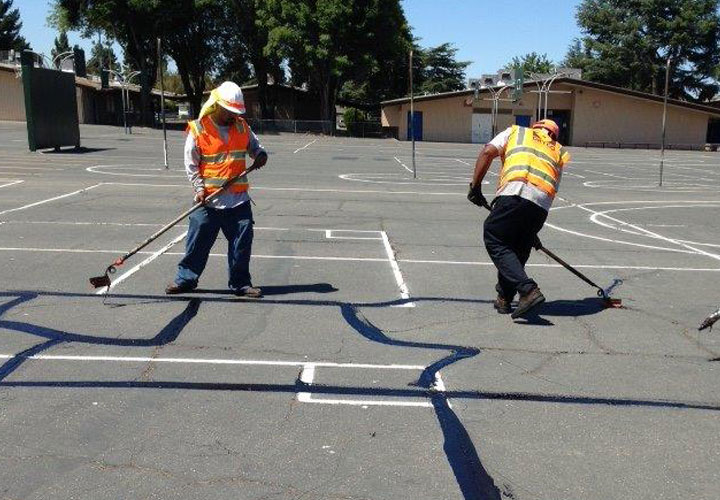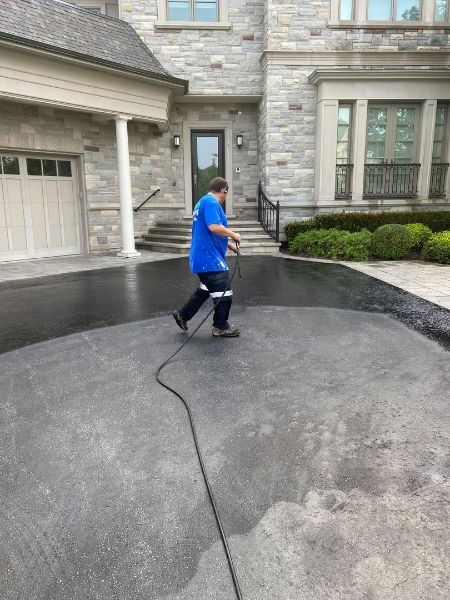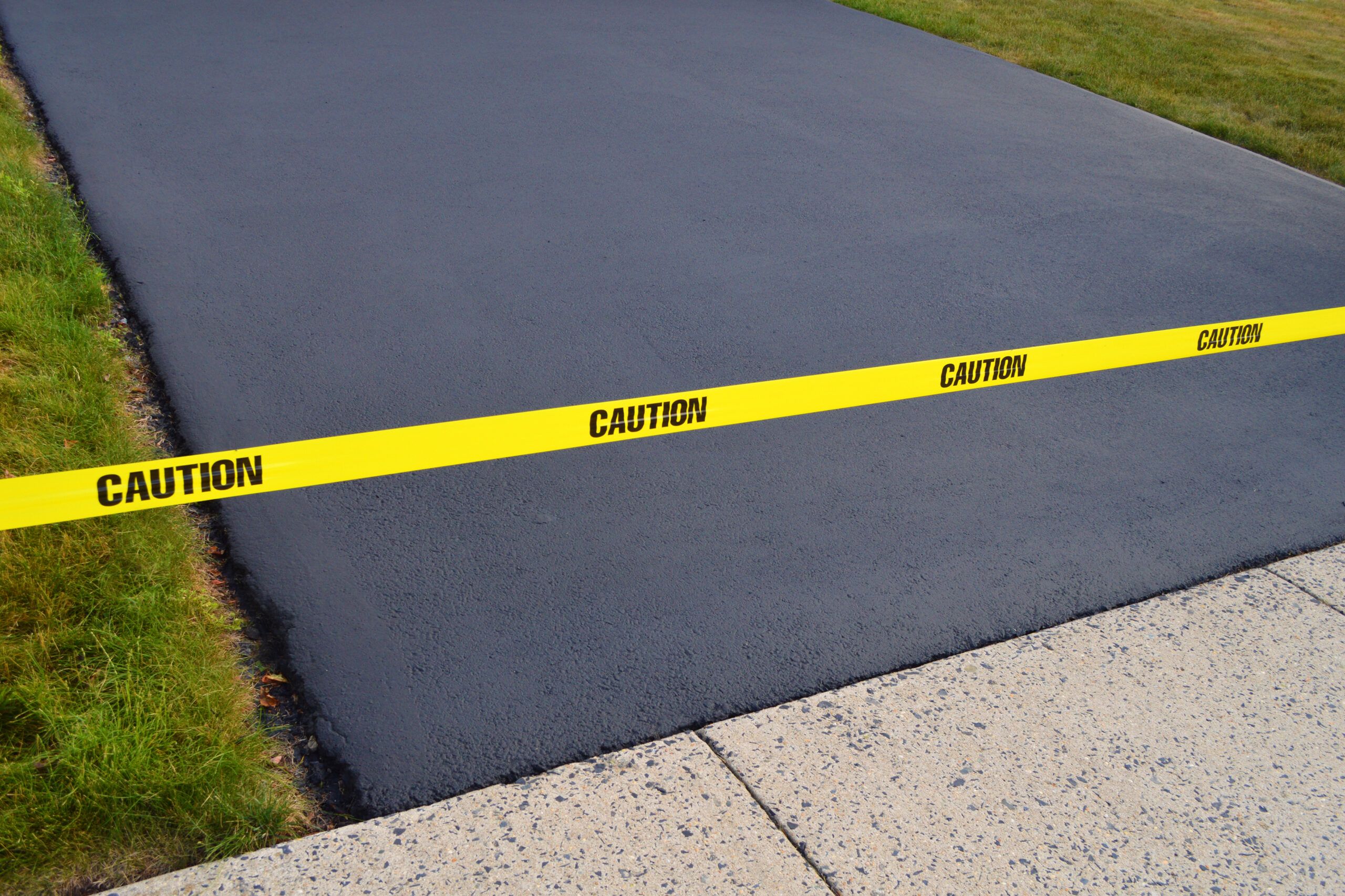Optimize Resilience: Warm Mix Asphalt Sealing for Angled Parking Structures
Warm Mix Asphalt: A Lasting Remedy for Sidewalk
Hot Mix Asphalt (HMA) has arised as a leading lasting selection for sidewalk options, using a myriad of innovative technologies and environmental advantages. Its capacity to decrease and recycle products power usage provides a compelling case for its fostering in roadway building jobs. The long-term performance and sturdiness of HMA make it a preferred option for framework advancement. As the demand for environmentally friendly building and construction techniques grows, exploring the subtleties of HMA's sustainability can offer valuable understandings into the future of sidewalk options.
Environmental Advantages of Hot Mix Asphalt

Furthermore, Warm Mix Asphalt helps to reduce city warmth island impacts. Its dark color takes in sunshine, reducing the amount of heat showed back right into the atmosphere contrasted to lighter-colored sidewalks. This can lower ambient temperature levels in urban areas, lowering the need for cooling and eventually decreasing power consumption.
Furthermore, Warm Mix Asphalt adds to improved stormwater administration. Its porous nature enables water to penetrate the sidewalk and charge groundwater supplies, lowering overflow and the risk of flooding. These ecological advantages make Warm Mix Asphalt a lasting selection for leading highways and roadways.
Power Performance in HMA Manufacturing
Is power effectiveness an essential variable in the production of Hot Mix Asphalt (HMA)? Energy plays a considerable role in the production of HMA, influencing both cost and ecological sustainability. One essential aspect of energy efficiency in HMA production is the use of warm mix asphalt (WMA) modern technologies.
Furthermore, improvements in plant modern technologies have led to even more energy-efficient HMA production processes. By enhancing power use in HMA manufacturing, the industry can minimize its carbon footprint while preserving high-quality pavement materials.
Recyclability of Warm Mix Asphalt
The recyclability of Warm Mix Asphalt (HMA) is a critical element of its sustainability and lasting ecological impact. HMA is among one of the most recycled products in the USA, with over 100 million loads of reclaimed asphalt pavement (RAP) being reused each year in brand-new pavement building. Recycling HMA uses numerous ecological advantages, such as reducing the need for virgin materials, reducing power intake throughout manufacturing, and decreasing the amount of waste sent to garbage dumps.
The procedure of reusing HMA includes milling the existing pavement, crushing it into smaller pieces, and blending it with brand-new accumulation and asphalt binder to develop a recycled mix. This recycled mix can often perform as blog here well as and even better than conventional HMA, while requiring less raw products and generating reduced greenhouse gas discharges. By integrating RAP into new pavement tasks, roadway companies can save natural resources, reduce prices, and decrease the ecological footprint of road building and maintenance activities. Overall, the recyclability of HMA plays a significant role in advertising lasting practices within the sidewalk industry.

Long-Term Efficiency of HMA
Asphalt sidewalks show toughness and resilience over an extended period, reflecting the long-term performance of Warm Mix Asphalt (HMA) The long life of HMA can be connected to its capacity to hold up against hefty website traffic lots, harsh climate conditions, and the results of aging. Researches have actually revealed that properly designed and effectively created HMA sidewalks can last for twenty years or more with linked here regular upkeep. The secret to maximizing the lasting efficiency of HMA hinges on using top quality materials, adhering to ideal methods in building, and carrying out efficient maintenance approaches. Appropriate drainage, regular examinations, and timely repair work are essential for maintaining the architectural honesty of HMA pavements in time. Additionally, advancements in HMA technology, such as making use of polymer-modified binders and warm mix asphalt, have better improved the sturdiness and durability of HMA sidewalks. By focusing on top quality building and construction and maintenance techniques, HMA proceeds to verify itself as a sustainable and economical option for durable sidewalk infrastructure.

HMA: Longevity and Sustainability
Demonstrating both sturdiness and sustainability, Warm Mix Asphalt (HMA) has actually come to be a foundation in the building and construction of durable pavement infrastructures - commercial parking lot paving. HMA's toughness stems from its capability to stand up to heavy loads, severe climate conditions, and high website traffic volumes, making it a trustworthy option for roads, highways, and airport runways. The structure of HMA, which normally includes aggregates, binder, and filler, plays a vital function in improving its durability and resistance to deterioration
In addition, HMA's sustainability exists in its recyclability and energy-efficient production procedure. The ability to reuse redeemed asphalt sidewalk (RAP) in brand-new HMA combinations lowers the need for virgin materials and decreases the ecological impact of pavement building and construction and upkeep. Additionally, the power effectiveness of generating HMA lies in its reduced mixing temperature levels contrasted to other sidewalk products, leading to reduced power usage and greenhouse gas emissions.
Final Thought
In final thought, hot mix asphalt (HMA) provides a lasting option for pavement with its eco friendly attributes. HMA's recyclability, energy effectiveness in production, and long-term durability make it an environment-friendly choice for moved here road building.
HMA is one of the most recycled products in the United States, with over 100 million lots of reclaimed asphalt pavement (RAP) being recycled every year in brand-new sidewalk building.The procedure of reusing HMA includes crushing the existing sidewalk, squashing it into smaller items, and mixing it with new aggregate and asphalt binder to produce a recycled mix.Asphalt sidewalks show resilience and strength over a prolonged duration, reflecting the long-lasting efficiency of Warm Mix Asphalt (HMA) Furthermore, developments in HMA technology, such as the usage of polymer-modified binders and cozy mix asphalt, have actually further enhanced the sturdiness and longevity of HMA sidewalks. The capability to reuse reclaimed asphalt pavement (RAP) in new HMA mixtures reduces the demand for virgin materials and minimizes the ecological impact of pavement building and construction and maintenance.